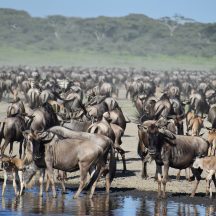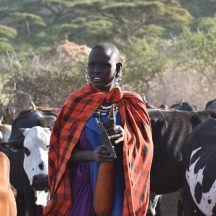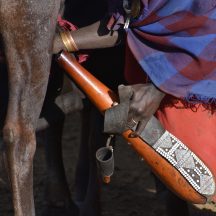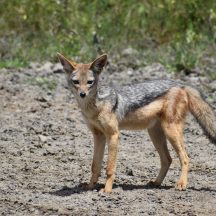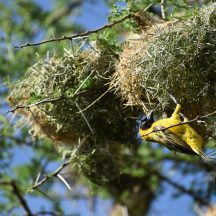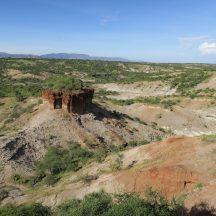By Mel Fox
I grew up on a farm at the foot of Kilimanjaro, about 20 miles from where these horses are stabled, so returning to Tanzania is always a thrill. Of course it has changed enormously over the years, but the country is still about 50 years behind Kenya in development.
This year in the Serengeti was perhaps my favorite ride ever. Catching up with the famous wildebeest and zebra migration of 1.3 million animals is a hit and miss affair, because it is totally dependent on rainfall. The rains do sometimes fail and the vast herds become scattered, but usually they are gathered in the southern Serengeti at this time, where ancient volcanic activity has created mineral-rich soil. The wildebeest come here to drop their calves, which takes place over a period of 3 weeks. It is amazing to watch the newborns get up on unsteady legs and then canter off with their mothers within a matter of 2 minutes. The abundant source of easy prey draws predators such as lion, hyena, wild dogs and jackals, which makes for exciting game viewing.

A wildebeest calf’s first steps
We flew in our private charter plan to Ndutu airstrip in the Ngorongoro Conservation Area and arrived at camp in time for lunch an and introductory afternoon ride. The first moving day we passed some of the migrating herds, but the highlight was a long canter with 70 giraffe. Our camp had been efficiently set up while we were riding and welcome hot showers were awaiting us. Wildebeest were calling all around, moving to the open plains for grazing during the day and retiring to thorn thicket country at night. A special experience from this camp was cantering with the wildebeest and then watching a herd of 200 eland cut single file in front of us; these huge animals are often quite elusive and it was a real treat to see so many together.

A group of giraffe
One night we set up a fly camp away from the horses in an area known for its dense population of predators – and we did have numerous lion sightings. The highlight for many was being able to see the stars through the roof of the lightweight tents – with hippo grazing among us!

Lion at rest
Our final camp was near a Masai boma and we set off early one morning on horseback to visit our neighbors and see the women milking into their gourds. We were also able to arrange a private tour of nearby Olduvai Gorge, where 1.5 million years ago early hominids, Australopithecus bosei and Homo habilis, thrived by a lake shore and left numerous tools. Louis and Mary Leakey worked for years at this site, starting in the 1930s. It was a humbling reminder that man has been part of this environment, sharing it with animals, since time immemorial.
- The migration
- Zebra and wildebeest travel together
- Visiting a Masai boma where they milk sheep, goats and cows
- The decorative gourd used when milking
- Jackal
- Elephant
- Weaver bird building its nest
- Olduvai Gorge


